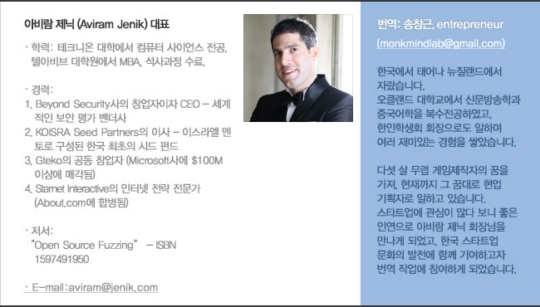회사가 목표를 `고객의 행복`이라 선언할 수 있겠지마는, 그럼에도 CEO가 이익에 집중한다면 직원들도 이를 곧 알아채게 되고 결국 회사가 집중하는 부분은 이익 창출 쪽으로 옮겨지게 될 것 입니다. 회사 벽에 적혀 있다거나 주기적으로 보내는 회사 이메일에 포함되는 목표와는 전혀 상관이 없죠.
영향을 받는 것은 비단 직원들 뿐만이 아닙니다. 당신의 스타트업이 1~2명으로 구성되어있다거나 혹은 당신 혼자일 뿐이더라도, 목표에 문제가 있다면 당신이 다른 누군가에게 이야기한 회사의 방향과는 전혀 다르게 나아가게 될 것입니다. 유저 베이스를 늘리고 싶다고 말하면서, 실은 제품의 기능을 늘리거나 백엔드 엔진(Back-end engine)을 개선하는 데 집중할 수 있겠지요.
이러한 방법을 통해 유저 포럼에 제품을 전도 하는 게 더 재밌으니까요. 당신의 무의식은 똑똑하게도 이미 진짜 목표가 무엇인지 알고 있습니다. 마치 당신의 직원들이 당신이 기대하는 바가 무엇인지를, 밖으로 명시한 목표와는 상관없이 이미 잘 알고 있는 것과 같이 말이죠.
미국에 이런 유명한 말이 있습니다. "아는 것이 승리의 절반이다 (아마 이 말은 아시아 지역의 독자들에게도 친숙 할텐데, 바로 미 대륙이 발견되기 훨씬 전부터 이러한 전략이 담긴 고서에서 이 내용을 빌려온 것이기 때문이죠)." 만약 우리가 문제가 무엇인지 알고있다면, 이미 그 해결책의 절반을나 찾은 것과도 같습니다. 그렇다면 중요한 목표에 도달했다는 것을 어떻게 알 수 있을까요? 앞서 말하였 듯, 회사 벽에 커다란 벽보를 붙여 넣는 것이 정답은 아닙니다.
하나의 가능성이 있다면, 바로 `측정`하는 방법이 있겠습니다. 무엇이 목표인지를 결정한 뒤, 차례차례 순번을 부여하는 것이지요. 만약 유저 모집이 목표라고 한다면, 다음 90일 이내에 100명의 유저를 추가로 모집한다, 라던지 말이죠. 이는 아주 간단하면서도 구체적인 목표여야합니다. 제 3자가 보아도 이해할 수 있을 정도로요. 예를 들어 `충성고객을 더 많이 모집한다`라는 말은 구체적이지 않습니다.
제가 본 가장 최근의 목표가 있다면 `1달동안 매 48시간 이내 최소 한 번은 내 앱을 이용하는 100명의 충성고객을 만들자." 정도였습니다. 이러한 목표는 구체적이기도 하고, 또 쉽게 계측할 수도 있습니다. 여기에 "다음 90일간"이라는 조건을 붙여서, 실제로 90일이 지나고난 뒤 충성고객 수를 계측해볼 수 있는 것이죠. 그리고 그 숫자가 100명을 넘었다면 아주 좋고, 100명을 못채웠다면 목표나 목표를 위한 과정 중 한 부분에 문제가 있다는 것이니 이는 고쳐져야 한다는 말이 되겠지요.
경험에 따르면, 구성원 모두가 목표를 인지한다면 그 구성원이 탄 배는 자연적으로 올바른 방향으로 향합니다. 그리고 그 다음에 직면할 문제는 바로 다음 목표를 올바르게 잡는 것이 되겠지요. 이건 생각보다 어려운 일입니다! 고객 만족 또는 고객 유치에 집중하고 싶다고요? 그렇다면 그걸 어떻게 계측할 수 있을까요? 기억하세요. 동시에 하나 이상의 목표를 잡을 수는 없습니다. 마치 한 척의 배가 동시에 두 방향으로 갈 수 없듯이 말이죠.
얼마나 자주 계측을 해야하고, 또 언제 목표를 설정해야할까요? 답은 어렵지 않습니다. 최대한 자주 계측하고, 언제나 목표를 세우십시오. 목표가 세워지지 않았다면, 그 배는 아무 방향으로나 흘러갈 것 입니다. 스스로가 옳은 방향으로 향하고 있다 믿어도, 그 것을 확실히 알 수 있는 방법은 없고, 그렇기 때문에 항해 도중 빙산과 충돌해 가라앉을 위험을 안고 가는 것이죠. 이렇듯 계속하여 계측을 하고 있지 않다면, 목표로 잘 향하고 있는 지를 어떻게 알 수 있겠습니까? 만약 계측이 어렵다면, 처음부터 목표를 세우는 것은 좋지 않습니다. 언급했듯이 계측이란 아주 간단한 숫자부터 시작합니다. CEO의 기분에 따라 결정되는 것이 아니죠.
What are you measuring?
There’s a funny thing about running a company. Regardless of what the advertised “goals” of the company are, the employees know what the real goals are. In fact, it’s a lot like a ship: the ship goes where the Captain turns to, not to where the Captain says he is going to.
And so, a company may state its goals are “making customers happy”. But if the company’s CEO cares about profit, the employees will know that immediately, and this is where the company focus will shift, regardless of what is written on the walls or in mission statements sent in periodic emails.
It’s not just employees. Even if your startup is 1 or 2 people (maybe just you?) it will go to the direction that may be different than the one you are talking about with everyone else. You may be saying you want to grow the user base, but actually focusing on adding features to the product, or improving the back-end engine, because ? well ? it’s more fun then trolling around in user forum to evangelize the product.
Your subconscious is smart, and knows what your true aim is. Just like your employees are smart and know what you really want them to do, regardless of the stated goals are.
There’s a famous American saying: “Knowing is half the battle” (and if it’s sounds familiar to Asian readers, it’s because it’s borrowed from Asian strategy books written hundreds of years before America was even discovered). So now that we know the problem, we’re half way to a solution. How can we make sure the important goals are met? As I mentioned, writing them in large letters on the wall isn’t the answer.
One possibility is measurement. Decide: What is the goal? And then, assign a number to it. If the goal is user acquisition, the goal will be: “acquire 100 more users in the next 90 days”. It has to be an objective goal and a simple measurement. Something that any 3rd party can validate. Something like: “get a lot more loyal users” is not an objective goal. A recent goal I saw was: “make 100 loyal users, which is using my app at least once every 48 hours over a month”. This is a great goal, objective and easily measured. To it I would only add: “... in the next 90 days”. When 90 days are done, we can measure the number of loyal users (simply defined). If the number is higher than 100, that’s great. If it’s a lot lower than 100, either our goal is bad or our process is bad, but something needs to be changed.
Experience shows that once everyone is aware of this goal, the ship is automatically turned towards the right direction. The next challenge becomes, choosing the correct next goal ? this is harder than you’d think! Should you focus on customer satisfaction or user growth? And how can you measure either? Remember: you can’t focus on two goals simultaneously just like you can point the ship in two different directions.
How often should you be measuring and when should you set a goal? That question is easy to answer: measure as often as possible, and always have a goal set. If you don’t have a goal set, the ship is wandering off in random directions. Though you may think you are doing ‘the right thing’, there is no way to know that for sure, and you run the risk of hitting an iceberg and sinking.
And if you’re not measuring, how do you even know you’re going towards your goal? It’s better not to set a goal in the first place if it’s not going to be measured. And measurement, as I’ve noted, is a simple number that can be verified. It can’t depend on the CEO’s mood.

�
관련뉴스














